Preparing your own Instant Pot chicken bone broth is so easy and economical. Homemade chicken broth is a healthier alternative to store-bought and tastes much better. Use this recipe to make wholesome and nourishing soups, stews and more.

Jump to:
- Why you’ll love this recipe
- Health benefits of bone broth
- Is bone broth ketogenic?
- Making low-FODMAP chicken broth
- Making bone broth AIP (for paleo autoimmune protocol)
- Ingredients
- Best bones to use
- Do I have to roast the bones?
- Instructions
- Expert tips
- How to store
- How to use
- Variations and add-ins
- FAQ
- Recipes that use chicken bone broth
- 📖 Recipe
- 💬 Comments
The Instant Pot is the fastest and easiest method for making your own homemade chicken bone broth. It comes together with minimal effort and tastes SO much better than anything you can purchase at the store.
You can use your own golden bone broth to make the best, most flavorful, healthy stews like this savory Fish Stew with Turnip and Fennel or a festive Chicken Taco Soup recipe. It's also delicious on its own as a simple bone broth drink and has numerous health benefits.
Use the leftover carcass and bones from roasted Convection Oven Chicken, or from your holiday Roast Turkey for the best turkey broth. Or, follow the same instructions and use beef bones instead of poultry to make an Irish Beef Stew.
Why you’ll love this recipe
- More flavor – homemade is more flavorful, rich and gelatinous than any commercially made, store-bought product
- Save money – store-bought can cost a small fortune. Making your own is incredibly inexpensive.
- You choose the ingredients – you're in control of the ingredients and flavors to include. You decide if you want in add onions and garlic - or not! Make your own low-FODMAP broth for your no onion no garlic recipes.
- Homemade is healthier – pressure cooking extracts more vitamins and minerals from the ingredients
Health benefits of bone broth
Homemade broth is a nutrient powerhouse with many benefits that store-bought doesn't have:
- Collagen – a highly bioavailable source of protein. This is what turns into gelatin when broth is cooled. It is almost a perfect protein, containing 18 of 20 amino acids that can aid in digestive support and contribute to healthy skin, hair, nails and joints. Protein in collagen has also been associated with increased muscle mass and weight loss.
- Chondroitin and glucosamine source – connective tissue and cartilage that are part of the carcass are rich sources of natural chondroitin and glucosamine that can contribute to joint health
- Vitamins and minerals – marrow in bones is rich in vitamins K2 and A and minerals such as zinc, manganese, selenium, iron and boron. It also contains omega fatty acids.
- Healing amino acids – abundant in proline, glycine and glutamine, these benefit the digestive system by healing the digestive lining. Glutamine helps to maintain the integrity of the intestinal barrier, contributing to the repair of leaky gut. Glycine has been shown to have anti-inflammatory properties and has a role in prevention of several inflammatory diseases helping to fight inflammation, making this an excellent post-workout recovery drink.
- Provides sustaining nutrition – because the protein in broth is so easily digestible, it is easily assimilated by the body, taking little to no energy to digest
- A rich source of electrolytes – these can be lost during times of illness, when following a ketogenic diet or through rigorous exercise. Check out more info on what electrolytes are and their importance in your diet.
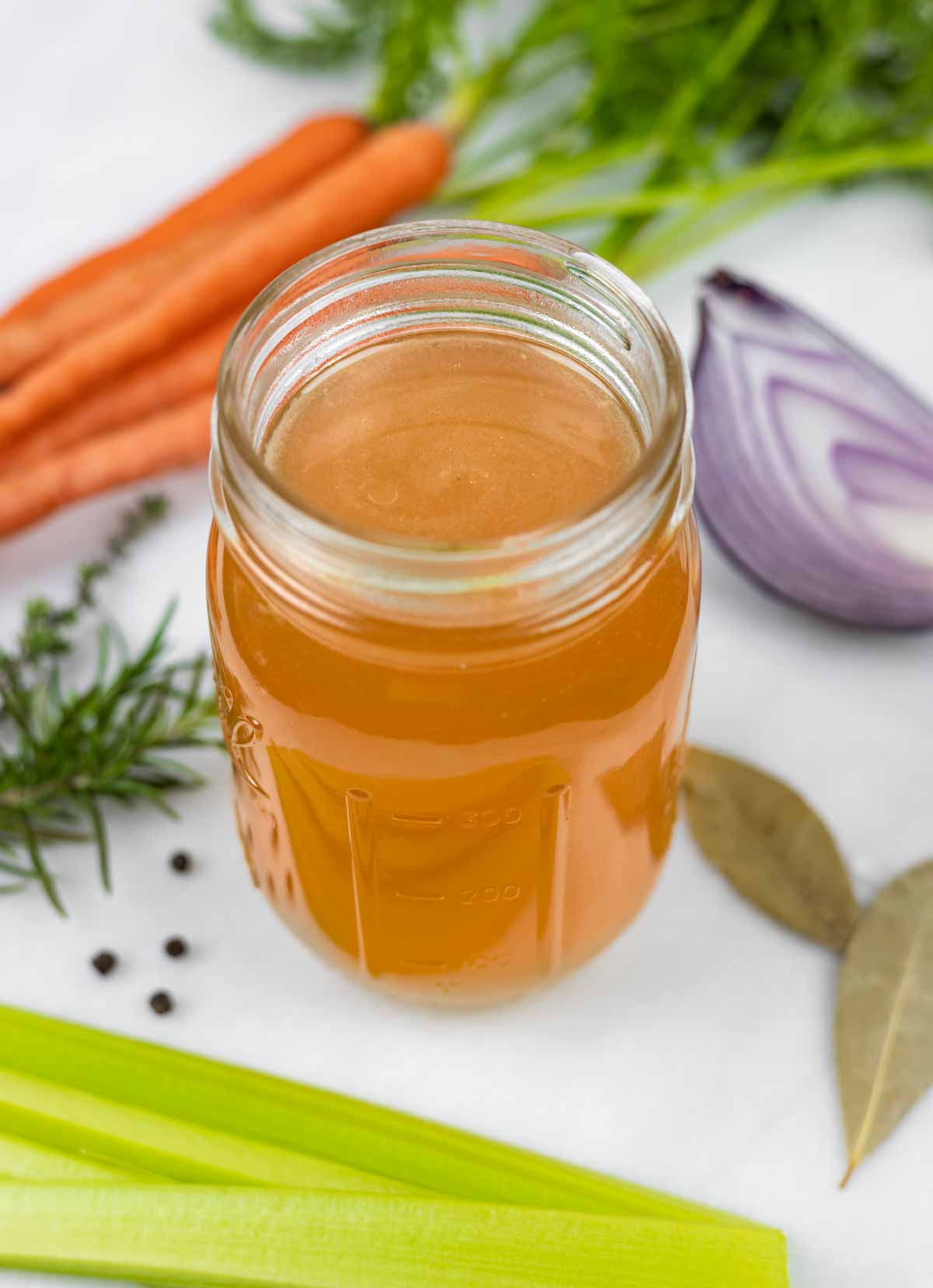
Is bone broth ketogenic?
It is definitely a healthy addition for those following a ketogenic diet when made with low-carb vegetables. The bones are naturally carb-free and contain healthy fats, minerals and electrolytes, which are essential for a healthy keto diet.
Making low-FODMAP chicken broth
Making your own broth is easily done without the addition of ingredients that can cause digestive upset. If you follow a low-FODMAP diet, consider creating onion flavor using the green part of a leek or the green part of green onions.
Celery is high in mannitol so be sure not to add more than 2 stalks or feel free to eliminate it altogether.
Making bone broth AIP (for paleo autoimmune protocol)
To make AIP bone broth, be sure to exclude nightshades and peppercorns. This recipe is perfect for AIP soups and can be a delicious start to your day as a nutritious coffee substitute - just warm up a cup and add your favorite herbs and spices.
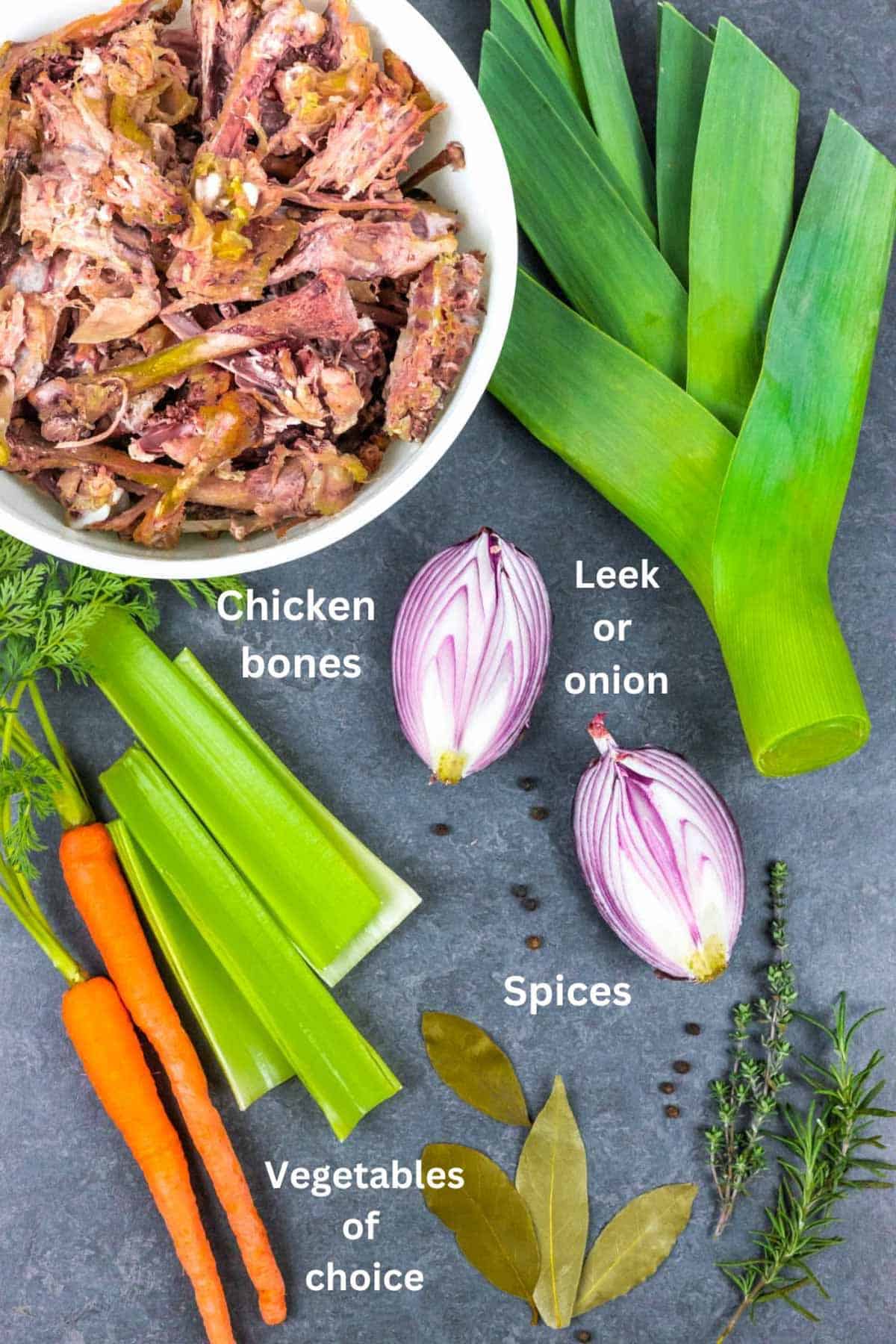
Ingredients
For exact measurements and complete instructions, see recipe card, below.
- Chicken bones – about 2 pounds of bones. See section below that discusses the best chicken bones to use.
- Vegetables of choice – I like to use celery, carrots and leek or onion. Omit onion for low-FODMAP.
- Herbs and spices of choice – bay, rosemary, thyme and peppercorns are my go-tos
- Water – filtered water is best
TIP: Save peels and scraps from trimmed vegetables. As long as they're washed and clean, they're still very nutritious and are perfect for making stock. Collect them in a large freezer bag and store it in the freezer until it's full and you're ready to make your next batch.
Best bones to use
- Leftover chicken bones – save leftover bones from roasting a chicken and eating bone-in thighs or wings. If you like picking up a rotisserie chicken from the store, make some rotisserie chicken bone broth with the leftover carcass. To save leftover bones, place them in a gallon sized freezer bag and store them in the freezer until you’re ready to use them. Just keep adding to the bag until it’s full.
- Chicken foot bone broth – chicken feet make the best bone broth. They are incredibly high in collagen and make the most gelatinous, flavorful, healthy broth.
- Wings or drums – these are the best options next to chicken feet. They are both high in cartilage and the skin also provides extra collagen.
- Chicken necks and backs – are not as available as wings, drums or feet, but are excellent options
Do I have to roast the bones?
Roasting bones is not necessary. However, using roasted bones gives the liquid a rich, golden color and deeper flavor, which is one reason I love using leftover bones from my holiday Roast Turkey (for the best homemade turkey broth) or from a Baked Whole Chicken.
Instructions
It takes just a few steps to make the perfect batch:
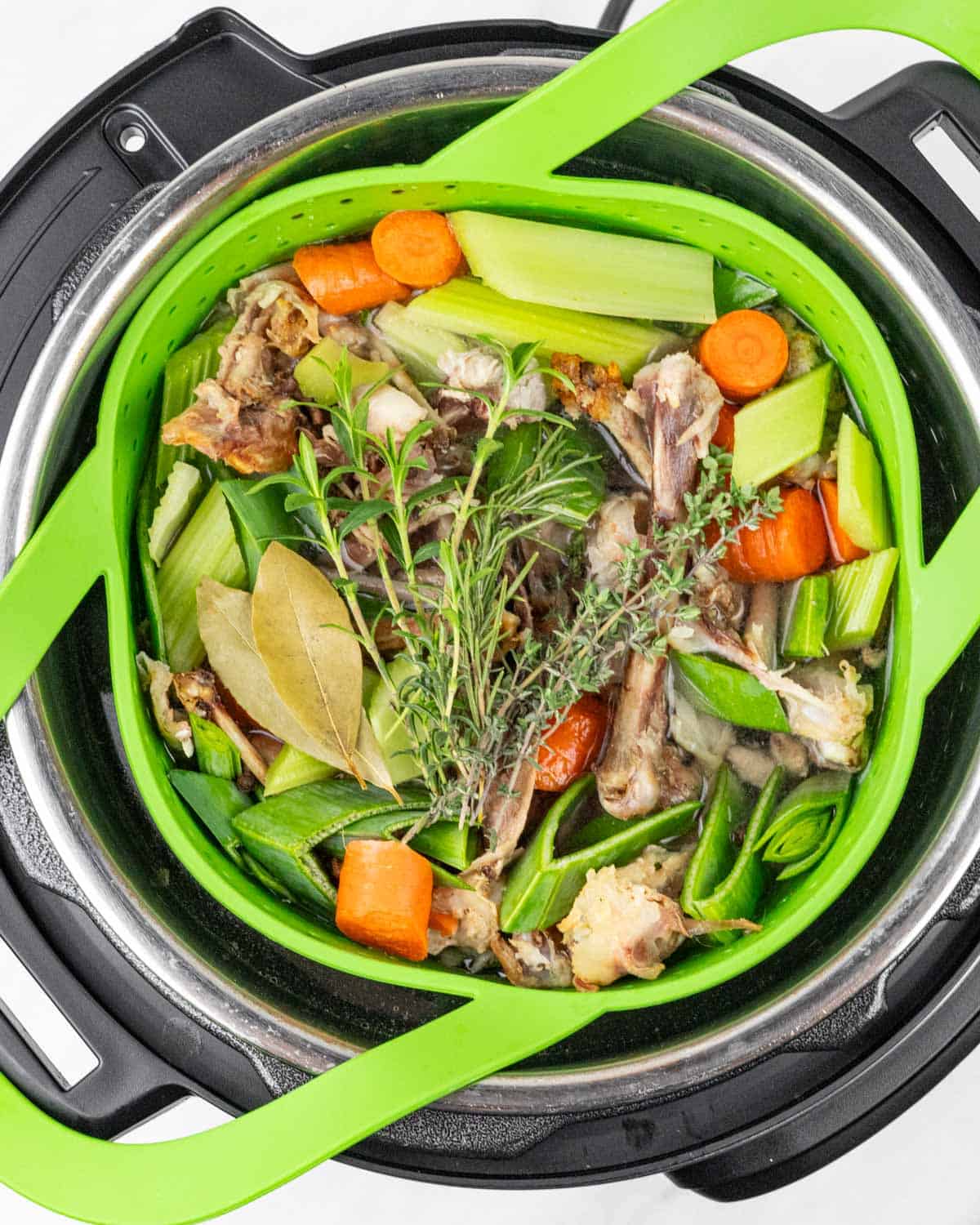
- Add all the chopped veggies, bones and herbs to the pot. I love using a silicone basket insert as it makes it so easy to remove and discard the ingredients when done.
- Cover the ingredients with filtered water, being careful not to overfill. Add water only to the max fill line even if the contents aren’t fully covered.
- Place the lid on the pressure cooker and cook on Soup/Broth setting for 120 minutes (2 hours).
- Allow the pressure to release using the natural release method. If you try releasing the pressure manually, hot liquid will spray out of the vent knob, which is not pleasant.
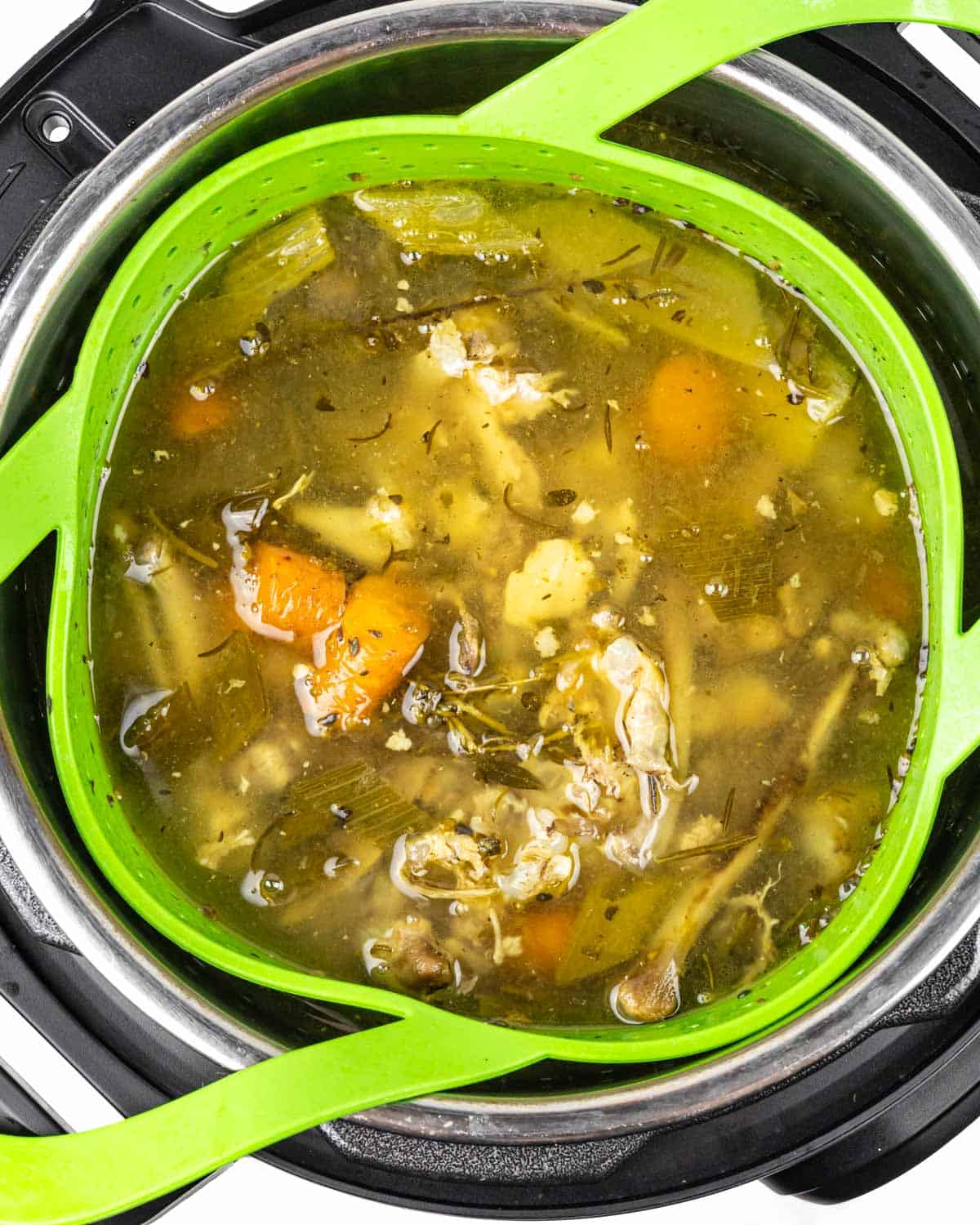
Let the stock cool for about a half hour, until warm, but not too hot.
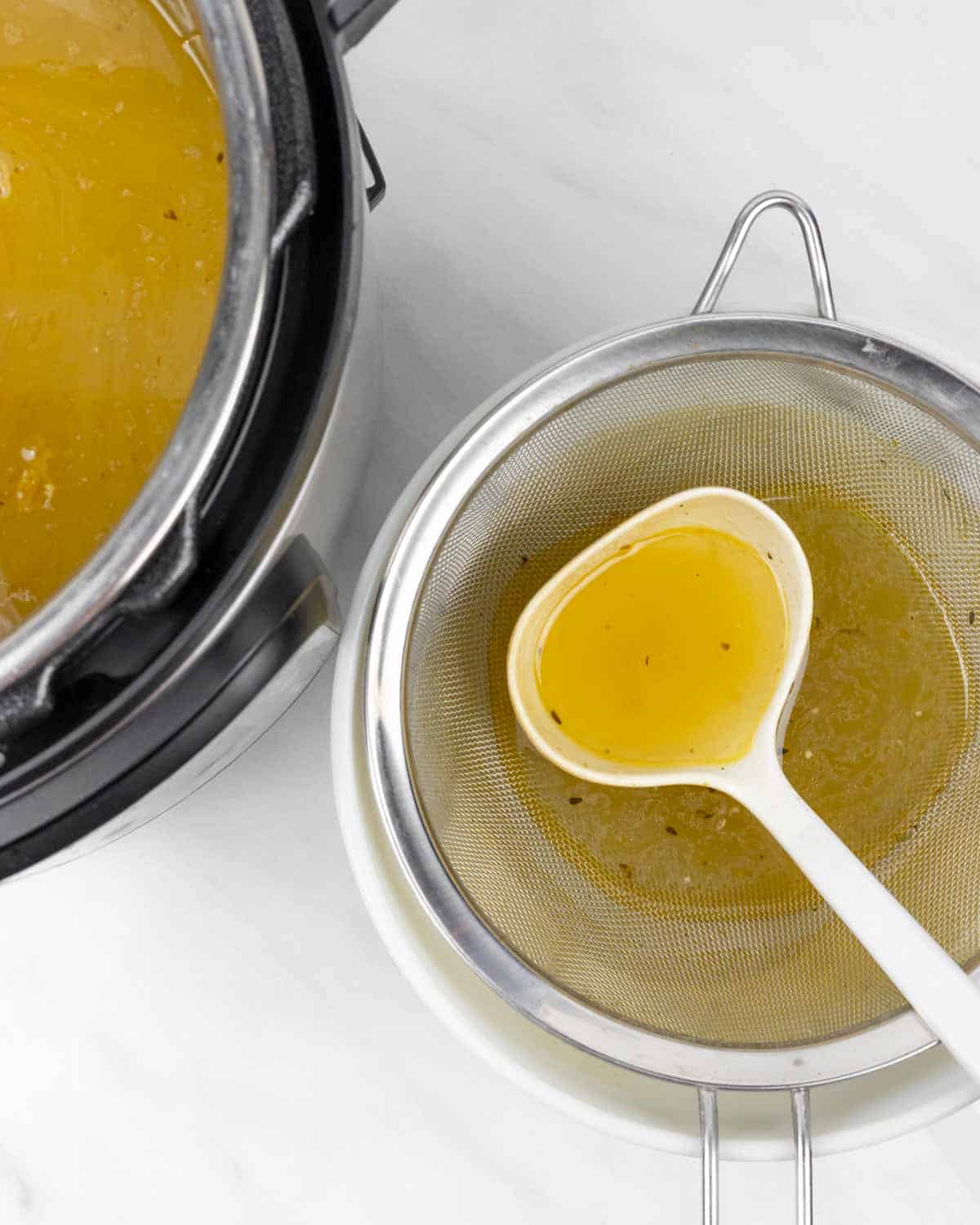
- Strain the stock using the strainer insert if using
- Using a fine mesh strainer over a large bowl, ladle the broth into the strainer, straining out any solids. Some people also like to use cheesecloth for this step, to filter out even the smallest particles.
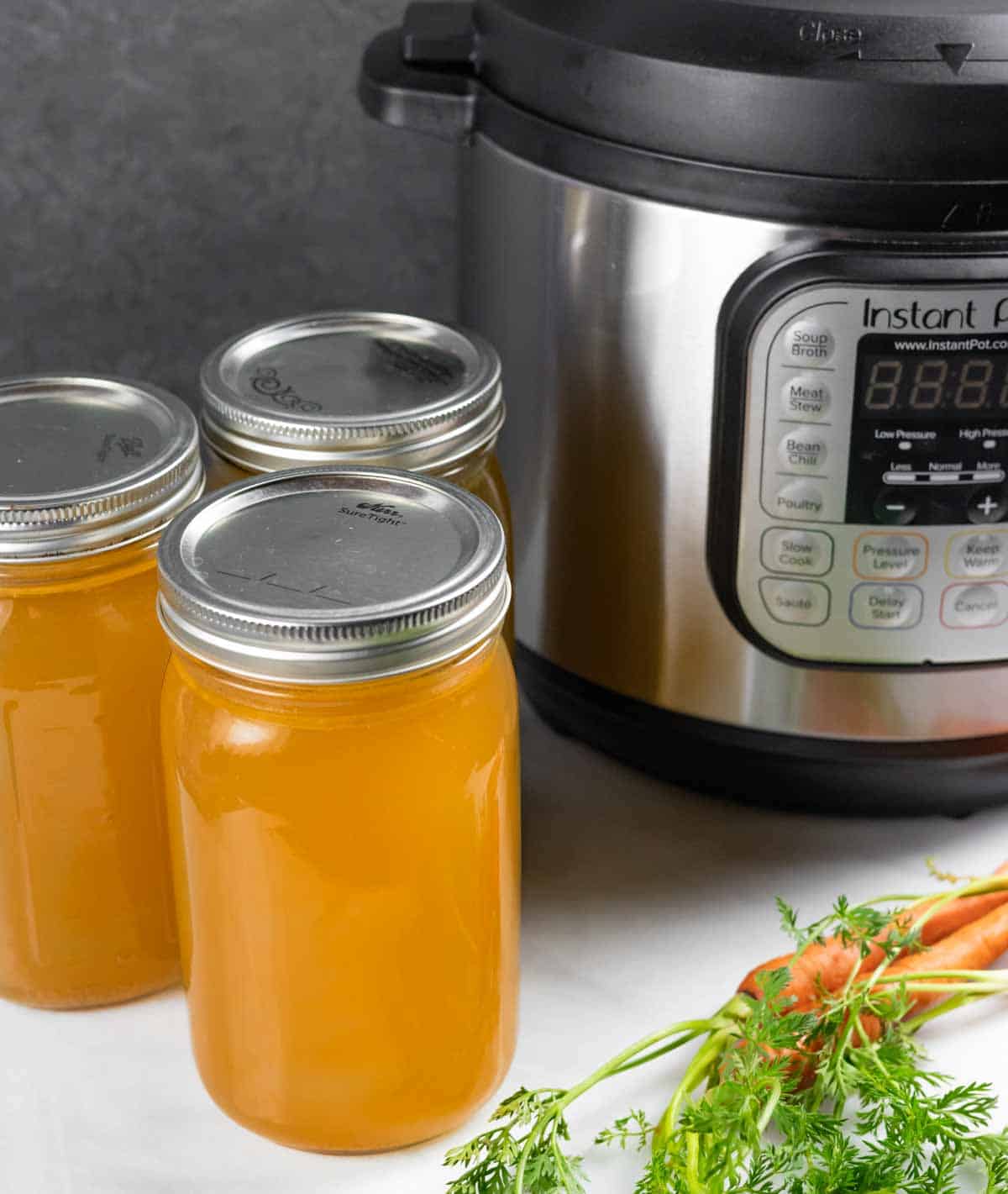
Let cool and pour into storage containers. I like to use mason jars.
Expert tips
- To make a low-fat chicken broth, after straining, try refrigerating it for a few hours before packaging. This allows the fat to solidify on top, making it easy to scoop away.
- If using whole, fresh vegetables, rather than scraps, peels, etc., after cooking, puree them in a blender to add to soups, stews or gravies. Or, consider adding them back to the broth for extra flavor.
How to store
Store fresh broth in a sealed container in the refrigerator for up to 5 days.
To freeze, fill a freezer-safe container, leaving at least ½ inch space at the top, allowing for expansion. As it freezes, it will either pop the lid off or crack the container if not enough room is left to allow for that expansion. It can be frozen for up to a year.
TIP: I find mason jars are the best way to store. As most recipes call for broth in cup or quart measurements, mason jars allow you to thaw only as much as you’ll need. Only fill your mason jars to the max fill line.
TIP: Consider freezing some in ice cube trays. These little bits are perfect for when you want to use just a small amount for sautéing vegetables or adding to other recipes, without having to thaw a whole pint or quart. And, they thaw right in the skillet! I use these to deglaze the pot after browning the meat in my Carnitas recipe.
Remove the cubes from the ice tray and store in a large freezer bag for easy use.
How to use
Use for any recipe that calls for broth, stock or bone broth.
- Gravy base – use it as a base for any gravy
- Use as a dairy substitute variation – in Tuna Pesto Pasta or Colcannon
- Simmer sauce – add to this Tikka Masala Paste Recipe to make an amazing simmer sauce
- Beef broth substitute – use as a replacement for beef broth. It will add a lighter color and milder flavor, but can be substituted 1:1.
- Chicken soup – of course, this is the most amazing base for a nice big pot of bone broth chicken soup
- Bone broth drink – it’s incredibly nutritious and makes a savory, yummy hot drink. Just heat it on the stove or in the microwave with a few herbs and spices.
Here are a few of my favorite drink add-ins:
- Turmeric, salt, cinnamon, ginger and curry leaves, which you can read more about in my Curry Leaf Ingredient Spotlight
- Ginger, lemongrass powder, tamari, fish sauce and salt
- Coconut milk, homemade tikka masala and kala namak black salt. Read more about why this is my favorite salt in my Kala Namak Ingredient Spotlight.
Variations and add-ins
- Try varying your vegetables with each batch – celery, carrots, onion and garlic (if tolerated), leek and leafy greens such as kale, collards or chard
- Spicy chicken broth – add cayenne, red pepper flakes or sliced hot peppers
- Make low-sodium chicken broth – I almost never add salt to mine. You can always add salt to the dish you’re cooking later.
- Use warming herbs – ginger, turmeric, allspice, or cumin
- Add light flavors – lemongrass, curry leaves, kaffir lime leaves, or seaweed
- Create bright flavors – star anise, dill, cilantro, coriander or lemon zest
- Make it savory – bay leaves, onion, garlic, shallots, sage, oregano, basil, thyme, savory, rosemary or marjoram
- Add umami and extra nutrients – consider adding mushrooms such as shiitake, maitake or oyster
TIP: It’s best to avoid asparagus and cruciferous vegetables, with the exception of broccoli stalks, because they can add bitterness. Starchy options, like potatoes, add carbohydrates and create a gooey, very unappealing texture.
FAQ
It tastes like regular broth, just with much deeper and richer flavor. When making homemade, the taste will vary depending on the ingredients you add to season it. But guaranteed, it will taste much better than store-bought!
You certainly can. It supports the protective mucosal layer in the intestine which can be damaged by inflammation, IBD and IBS. The gelatin not only helps to maintain the integrity of the digestive system, but aids in healing it, as well.
Vinegar is not needed to make excellent broth. It's a very popular ingredient, but it isn't necessary. It's acidic nature is believed to help draw out collagen and minerals from the bones, but that will happen on its own with pressure cooking or during an extended simmer. However, you can always add a tablespoon of apple cider vinegar if you wish.
Yes, absolutely. Place all of the ingredients and water in your slow cooker and simmer for at least 24 hours and up to 36 hours.
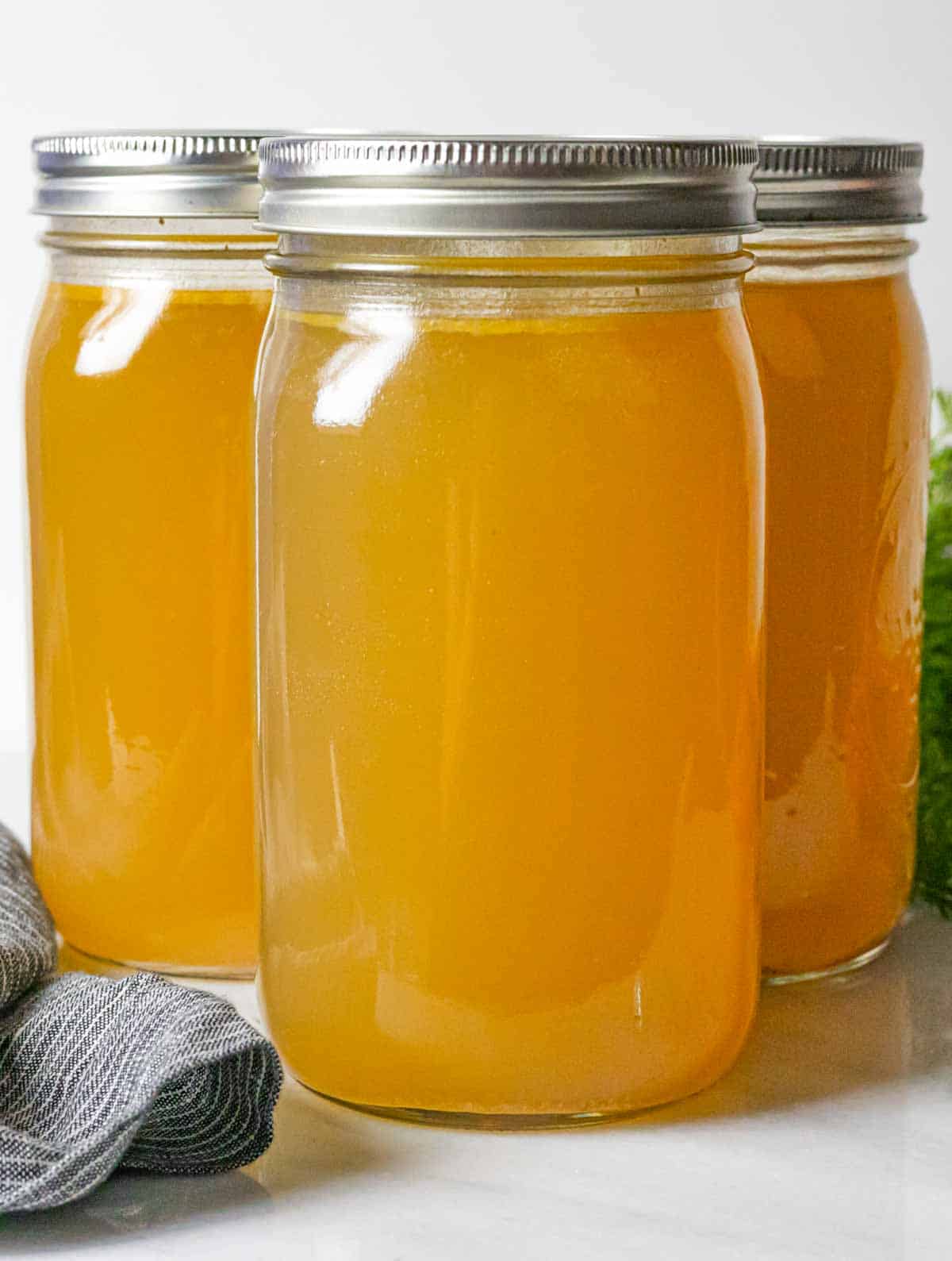
Recipes that use chicken bone broth
Have you tried making your own? I'd love to hear how it turned out and what your favorite ingredients are - please leave a rating and a message in the comments section!
📖 Recipe
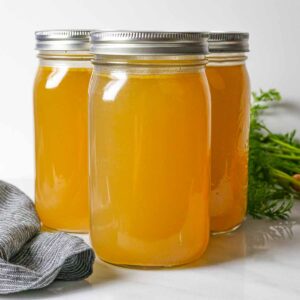
Instant Pot Chicken Bone Broth (low-FODMAP friendly)
Ingredients
- 2 pounds chicken bones (see Post for the best bones to use)
- 2 carrots (chopped in large pieces)
- 2 celery stalks (chopped in large pieces - optional for low FODMAP)
- 1 leek or onion (chopped in large pieces - green part of leek only for low-FODMAP or use onion if not low-FODMAP)
- water (filtered is best)
Optional herbs and spices
- 1 teaspoon rosemary (fresh or dried)
- 1 teaspoon thyme (fresh or dried)
- 2 bay leaves
- 1 teaspoon peppercorns (whole)
Instructions
- Place the bones in the Instant Pot. I love to use this silicone strainer because it makes straining the broth such an easy task, but it’s not necessary.
- Add vegetable and spice ingredients.
- Cover the ingredients with water, being careful not to overfill. Add water only to the max fill line – it’s okay if the contents aren’t fully covered.
- Secure the lid and flip vent valve to 'Sealing'.
- Press the Soup/Broth button and adjust time to 120 minutes (2 hours). Use the natural release method when finished.
- Let cool for about 30 minutes.
- If using the silicone strainer, remove from the pot and dispose of the bones and vegetables after it cools a bit. Using a fine mesh strainer over a large bowl, ladle the broth into the strainer, straining out any solids. Some people also like to use cheesecloth for this step to remove any particles.
- If not using a silicone strainer, strain the broth through a fine mesh strainer and discard the bones and vegetables.
Packaging and Storage
- Place the broth in the refrigerator until cool. A layer of fat may form on the top and can be skimmed off before storing. For a fattier option, don't skim off the fat.
- Fill containers of your choice and refrigerate for up to 5 days, or freeze. I like to store and freeze in mason jars, but also freeze some in ice cube trays for times when I need just a little broth. After the trays freeze, store cubes in a zip top bag in the freezer.TIP: Be sure to leave space at the top of your containers, When freezing, the liquid will expand and can either pop the lid off or break the container.
Notes
Expert Tips
- To make a low-fat chicken broth, after straining, try refrigerating it for a few hours before packaging. This allows the fat to solidify on top, making it easy to scoop away.
- If using whole, fresh vegetables, rather than scraps, peels, etc., save them and puree in a blender to add to soups, stews or gravies
Nutrition
*Net carbs = carbohydrates - fiber
Nutritional information is an estimate, calculated using online tools and does not include optional ingredients unless otherwise indicated.




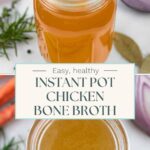
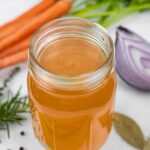
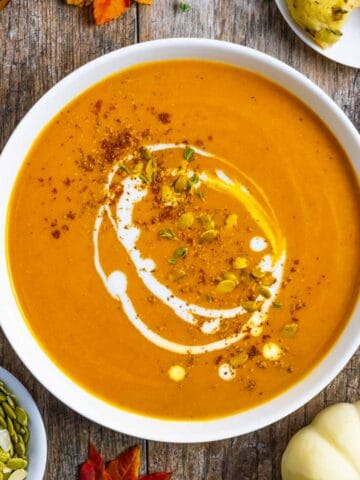
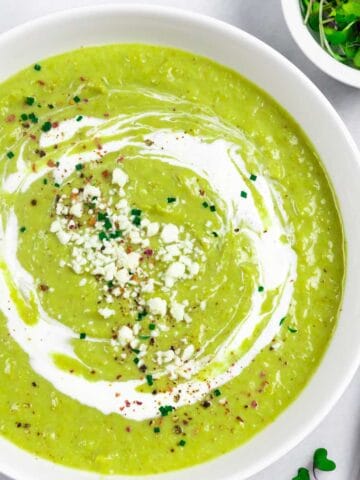

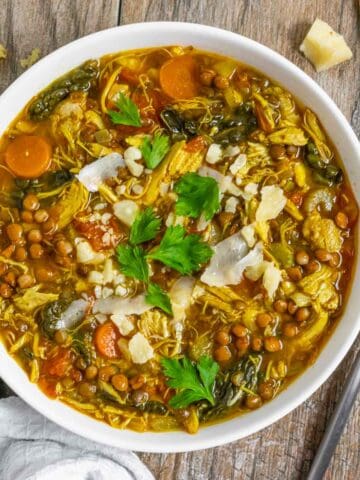
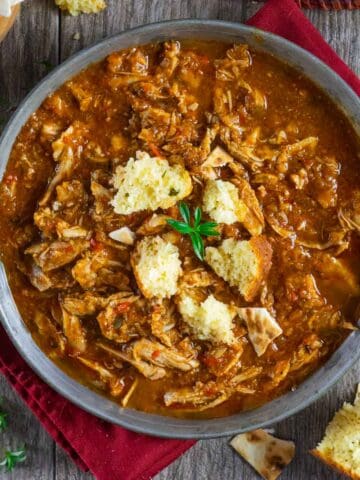
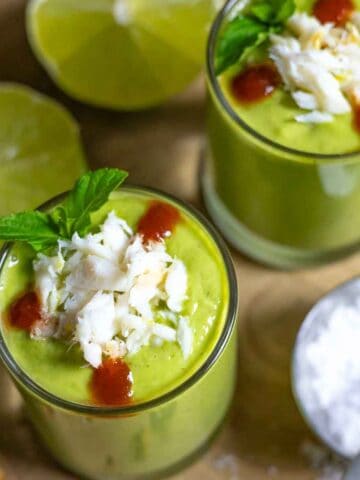

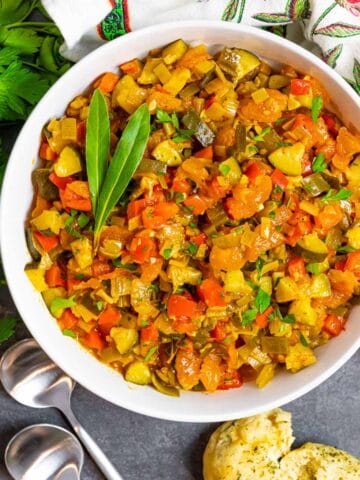
Comments
No Comments